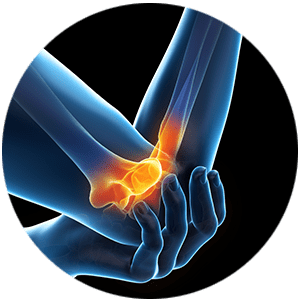
ELBOW INFORMATION

Arthroscopy
The surfaces of the bones where they meet to form the elbow joint are covered with articular cartilage, a smooth substance that protects the bones and acts as a natural cushion to absorb forces across the joint. A thin, smooth tissue called synovial membrane covers all remaining surfaces inside the elbow joint. In a healthy elbow, this membrane makes a small amount of fluid that lubricates the cartilage and eliminates almost any friction as you bend and rotate your arm.On the inner and outer sides of the elbow, thicker ligaments (collateral ligaments) hold the elbow joint together and prevent dislocation.
The elbow joint is surrounded by muscles on the front and back sides. In addition, the three major nerves that cross the elbow joint are located close to the joint surfaces and capsule and must be protected during arthroscopic surgery.
Source: https://orthoinfo.org/en/treatment/elbow-arthroscopy/

Fractures
An olecranon (oh-LEK-rah-nun) fracture is a break in the bony "tip" of the elbow. This pointy segment of bone is part of the ulna, one of the three bones that come together to form the elbow joint.The olecranon is positioned directly under the skin of the elbow, without much protection from muscles or other soft tissues. It can break easily if you experience a direct blow to the elbow or fall on an outstretched arm. A fracture can be very painful and make elbow motion difficult or impossible.
Treatment for an olecranon fracture depends upon the severity of the injury. Some simple fractures can be treated by wearing a splint until the bone heals. In most olecranon fractures, however, the pieces of bone move out of place when the injury occurs. For these fractures, surgery is required to restore both the normal anatomy of the elbow and motion in the joint.
Source: https://orthoinfo.org/en/diseases--conditions/elbow-olecranon-fractures/

Replacement
The surfaces of the bones where they meet to form the elbow joint are covered with articular cartilage, a smooth substance that protects the bones and enables them to move easily. A thin, smooth tissue called synovial membrane covers all remaining surfaces inside the elbow joint. In a healthy elbow, this membrane makes a small amount of fluid that lubricates the cartilage and eliminates almost any friction as you bend and rotate your arm.Muscles, ligaments, and tendons hold the elbow joint together.
Source: https://orthoinfo.org/en/treatment/total-elbow-replacement/
